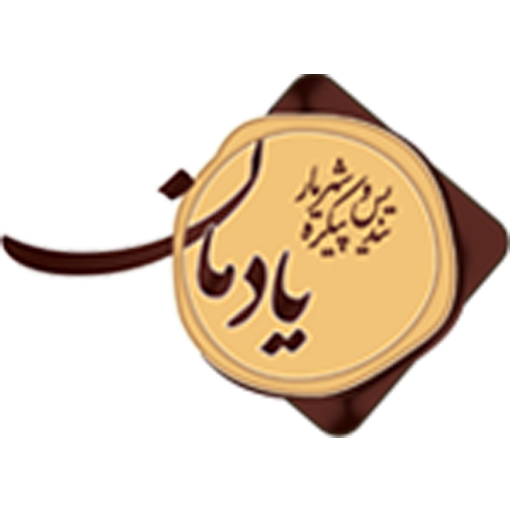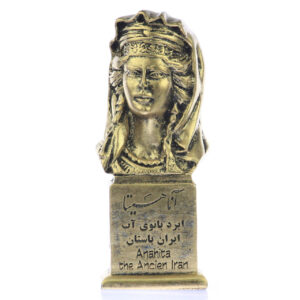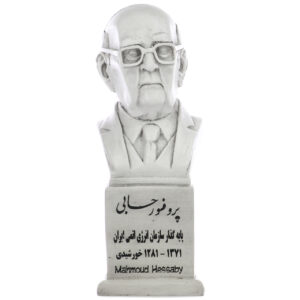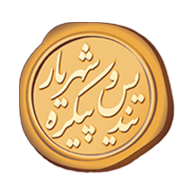The Qajars were a Turkmen tribe that held ancestral lands in present-day Azerbaijan, which then was part of Iran. In 1779, following the death of Mohammad Karim Khan Zand, the Zand Dynasty ruler of southern Iran, Agha Mohammad Khan, a leader of the Qajar tribe, set out to reunify Iran. Agha Mohammad Khan defeated numerous rivals and brought all of Iran under his rule, establishing the Qajar dynasty. By 1794 he had eliminated all his rivals, including Lotf ‘Ali Khan, the last of the Zand dynasty, and had reasserted Iranian sovereignty over the former Iranian territories in Georgia and the Caucasus. Agha Mohammad established his capital at Tehran, a village near the ruins of the ancient city of Ray (now Shahr-e Rey). In 1796 he was formally crowned as shah. Agha Mohammad was assassinated in 1797 and was succeeded by his nephew, Fath Ali Shah.
Agha Mohammad Khan’s reign is noted for the return of a centralized and unified Iran and, for relocating the capital to Tehran, where it still stands today. He is also noted for his cruel and rapacious behavior, particularly during the re-subjugation of Georgia. He sacked the capital Tbilisi, massacred many of its inhabitants, and moved some 15,000 Georgian captives back to mainland Iran.
Early life (1742–1779)
Family and youth

Agha Mohammad Khan was born in Astarabad around 1742. He belonged to the Qoyunlu (also spelled Qawanlu) branch of the Qajar tribe. The tribe had several other branches, one of the most prominent ones being the Develu, which often fought against the Qoyunlu. Agha Mohammad Khan was the eldest son of the chieftain of the Qoyunlu clan, Mohammad Hasan Khan Qajar, and the grandson of Fath-Ali Khan Qajar, a prominent aristocrat executed by the orders of Shah Tahmasp II (possibly compelled by Nader Qoli Beg, who came to be known as Nader Shah after usurping the throne of Iran in 1736, marking the foundation of the Afsharid dynasty).[1] Agha Mohammad Khan had several half-brothers and full-brothers: Hossein Qoli Khan, Morteza Qoli Khan, Mostafa Qoli Khan, Reza Qoli Khan, Jafar Qoli Khan, Mehdi Qoli Khan, Abbas Qoli Khan and Ali Qoli Khan.
When Nader Shah died in 1747, the Afsharid rule of Iran fell apart, which gave Mohammad Hasan an opportunity to seize Astarabad for himself, leading Nader Shah’s nephew Adel Shah to march from Mashhad to the city in order to capture him. Although he failed to capture Hasan, Adel Shah managed to capture Agha Mohammad Khan, whom he planned to kill. He later chose to spare Agha Mohammad Khan’s life and instead had him castrated and thereafter freed. While the common spelling of “Agha” (آقا)is usually used as a title roughly translated to “Sir” or “Mister”, Agha Mohammad Khan’s title is differently spelled (آغا), which is a common one among eunuchs who served at the court.
The death of Mohammad Hasan
During the following 10 years, Afsharid rule in Khorasan suffered heavily from war among rival chieftains and from invasions by the Durrani ruler of Qandahar, Ahmad Shah Durrani. During this period, Mohammad Hasan fought against the Pashtun military leader Azad Khan Afghan and the Zand ruler Karim Khan for suzerainty over the western part of Nader Shah’s former empire. He was, however, defeated in 1759 by a Zand army. He was betrayed by his own followers and thereafter, killed by his old rival, Mohammad Khan of Savadkuh. Due to Agha Mohammad Khan’s castration, his brother Hossein Qoli Khan was appointed as the new chieftain of the Qoyunlu instead. Shortly thereafter Astarabad fell under the control of Karim Khan, who appointed a Develu named Hossein Khan Develu as its governor. Meanwhile, Agha Mohammad Khan and his brother Hossein Qoli Khan fled to the steppe. One year later, Agha Mohammad Khan made an incursion against Astarabad, but was forced to flee, chased by the city’s governor. Agha Mohammad Khan managed to reach Ashraf, but was at last seized and was sent as a hostage to Tehran, ruled by Karim Khan. Hossein Qoli Khan was also soon captured and sent to Karim Khan.
Life at Karim Khan’s court

During his stay, Agha Mohammad Khan was treated kindly and honorably by Karim Khan, who made him convince his kinsmen to lay down their arms, which they did. Karim Khan then settled them in Damghan. In 1763, Agha Mohammad Khan and Hossein Qoli Khan were sent to the Zand capital, Shiraz, where their paternal aunt Khadija Begum, who was part of Karim Khan’s harem, lived. Agha Mohammad Khan’s half-brothers Morteza Qoli Khan and Mostafa Qoli Khan were granted permission to live in Astarabad, due to their mother being the sister of the governor of the city. His remaining brothers were sent to Qazvin, where they were treated honorably.
Agha Mohammad Khan was looked upon more as a respected guest in Karim Khan’s court than a captive. Furthermore, Karim Khan also acknowledged Agha Mohammad Khan’s political knowledge and asked his advice on interests of the state. He called Agha Mohammad Khan his “Piran-e Viseh”, referring to an intelligent counselor of the mythical Turanian king Afrasiab in the Shahnameh epic. Two of Agha Mohammad Khan’s brothers who were at Qazvin were also sent to Shiraz during this period. In February 1769, Karim Khan appointed Hossein Qoli Khan as the governor of Damghan. When Hossein Qoli Khan reached Damghan, he immediately began a fierce conflict with the Develu and other tribes to avenge his father’s death. He was, however, killed ca. 1777 near Findarisk by some Turks from the Yamut tribe with whom he had clashed. On 1 March 1779, while Agha Mohammad Khan was hunting, he was informed by Khadija Begum that Karim Khan had died after six months of illness.
Government
The bureaucracy
The bureaucracy remained small during the reign of Agha Mohammad Shah—apart from the grand vizier, the leading figures of the administration were the chief revenue officer (mustaufī) and the muster-master (lashkarnevīs) of the army. Only one person occupied each post during Agha Mohammad Shah’s reign; Hajji Ibrahim, who served as grand vizier; Mirza Ismail, who served as the chief revenue officer, and Mirza Asad-Allah Nuri, who served as muster-master. Since Agha Mohammad Shah was primarily busy with his military expeditions, his court was constantly his camp, and Hajji Ebrahim, along with other officials, usually participated in his campaigns.
Provincial administration

During Agha Mohammad Shah’s reign, provincial administration followed the same model of the Safavid one; beglerbegis were appointed to govern provinces. A city was under the rule of a kalantar and darugha, while its quarters was under the rule of the kadkhuda.[44] Governorship of provinces went for the most part to tribal chieftains—this was later changed by Fath-Ali Shah Qajar, who appointed many of his relatives as governors.
Military
Agha Mohammad Shah was more of a military leader than politician, and was known for his determined sovereignty, instead of a charismatic one. His military prowess was highly noticeable—Malcolm’s evaluation, which was written some years after his death, says the following: “His army was inured to fatigue, and regularly paid; he had introduced excellent arrangement into all its Departments, and his known severity occasioned the utmost alacrity and promptness in the execution of orders, and had he lived a few more years, it is difficult to conjecture the progress of his arms.”
The Scottish traveller James Baillie Fraser also says the following thing about him: “Agha Mohammad had likewise the talent of forming good and brave troops. His active and ambitious disposition kept his army constantly engaged; and they acquired a veteran hardihood and expertness, that rendered them superior to any other Asiatic troops.”
Construction
Agha Mohammad Shah did not construct or repair much during his reign, due to the campaigns and battles which occupied his time. In Tehran, he ordered the creation of a mosque named the Masjid-e Shah (meaning “the Shah’s mosque”), while in Mashhad he ordered the reparation of the Imam Reza shrine. In Astarabad, he repaired (or fortified) the walls, emptied the ditch, built several buildings, one of them being a palace for the governor. Furthermore, he also improved the overall condition of the city. He did something similar in Babol, Ashraf and Sari. Of all these constructions and reparations, his best and most lasting achievement is debatably making Tehran his capital, which till this day is the country’s capital and largest city.











 Candle Holder
Candle Holder Coasters
Coasters Jewelry Box
Jewelry Box


























Reviews
There are no reviews yet.